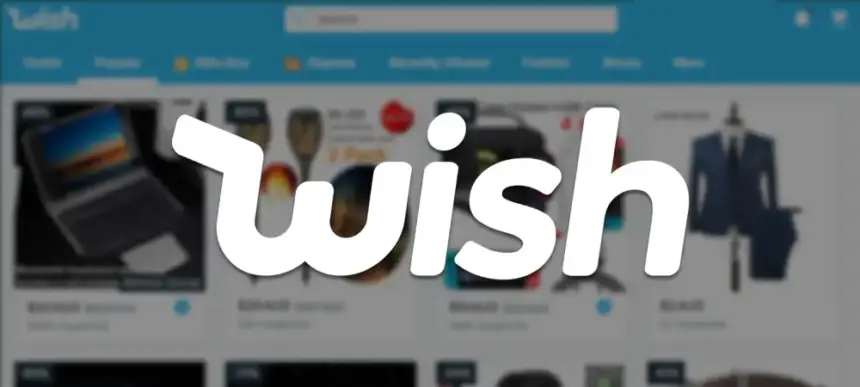Introduction to Wish Shopping: Understanding the Basics
Contemplating a shopping spree on Wish? We’ve delved into a comprehensive analysis of this platform, known for offering imported products from China at incredibly low prices. Wish boasts an extensive array of items across various categories, enticing impulse purchases worldwide—a strategy that proved successful until formidable Asian competitors like Temu and Shein emerged, overshadowing its prominence. Presently, Wish doesn’t rank among the top 20 most visited marketplaces globally.
Understanding Wish: What Exactly is it?
Wish, an American eCommerce venture founded by Peter Szulczewski and Danny Zhang—former programmers at Google and Yahoo, respectively—holds a significant position in the online retail sector due to its unique proposition. Acting as an intermediary platform connecting sellers and buyers, Wish is renowned for offering products at remarkably low prices.
It functions akin to a vast AliExpress, featuring a diverse range of items spanning fashion, accessories, technology, fitness equipment, pet clothing, and even rolling papers, to name a few. The concept evolved from a 2013 app developed by Szulczewski and Zhang, initially serving as a wish list platform. Over time, they observed users gravitating towards the app’s cheapest items, prompting them to engage directly with merchants, particularly those in China.
While Wish experienced a golden era some years ago, the emergence of new platforms like Temu, Shein, or Miravia has posed challenges. At its peak, Wish boasted around 90 million active users and 1 million vendors offering over 300 million products. However, its current figures reflect a decline, with only 12 million active users, 250 thousand merchants, operations across 60 countries (excluding Ukraine and Israel due to ongoing conflicts), and an average daily sale of 900,000 items.
Despite being headquartered in San Francisco, Wish maintains offices worldwide, including in Amsterdam, Toronto, and Shanghai.
Navigating Wish: Clean Design and User-Friendly Interface
Upon entering Wish, users encounter a clean design within a straightforward interface predominantly featuring white hues. The layout minimizes distractions, enabling users to focus on available items. The absence of excessive buttons or links enhances the shopping experience, ensuring seamless navigation. However, essential sections such as ‘contact, terms, policies, and more’ are discreetly tucked away in a tab at the bottom of the webpage.
Wish Website Layout in Spanish:
The homepage comprises a top-row menu, typical upper-right section housing search, notifications, profile, favorites, and cart icons, followed by a selection of popular or bestselling products, express items (with quick shipping), flash deals (offering special discounts), the deal center (daily deals with up to 60% off), and recently viewed products. Subsequently, four dropdown buttons featuring popular products, fashion items, baby products, and more appear on the same line.
Scrolling down reveals a banner carousel promoting various sections of the website, including the deal center, trending products, ‘wish picks’ (products tailored to individual users), sports deals, among others. Further down, users encounter a section displaying trending offers—an eclectic mix of items sorted without a discernible criterion, where the focus lies primarily on discounts.
Product Information: Insufficient and Poorly Translated
Upon clicking on a product, a window within the same page displays a gallery of images, product description (often marred by automated translation and lack of coherence), ratings, pricing (inclusive of VAT), eligibility for flat-rate shipping, installment payment options, dropdown menus for selecting size or color, and an ‘Add to Cart’ button. Additionally, users can peruse user reviews, add the product to favorites, view standard shipping costs and in-store pickup options, approximate delivery date, original description in English, the selling store with a corresponding link and rating, return policy details, and report options. Direct payment isn’t available; users must add items to the cart before proceeding to checkout.
Payment and Shipping Options
The checkout process is straightforward, requiring users to enter shipping details before proceeding to payment, which can be made via card, PayPal, or deferred payments through Klarna. Opting for fixed-rate shipping prompts users if they’ve reached the minimum purchase requirement or need to add more items. The final screen displays shipping costs and estimated delivery dates (often spanning up to 17 days), alongside the total price and any applicable discounts, with a link to discount coupon options and the ‘Checkout’ button—all consolidated on a single page for user convenience.
Shipping costs apply per individual item rather than per order, varying based on size, weight, destination, and vendor. However, Wish offers a fixed-rate option of €2.99 for orders exceeding €10, applicable only to eligible items.
Overall Assessment
In summary, Wish resembles a Chinese bazaar, prioritizing bargain hunting over product quality. It doesn’t promise luxury or high-quality items. Primary tabs don’t categorize products; instead, they pile up akin to a physical store, highlighting their incredibly low prices fervently.
The platform seems geared towards mass, rapid, and widespread sales, targeting impulse buyers enamored with low prices, offers, and discounts. In other words, meticulous shoppers inclined to compare options may find Wish less appealing.








